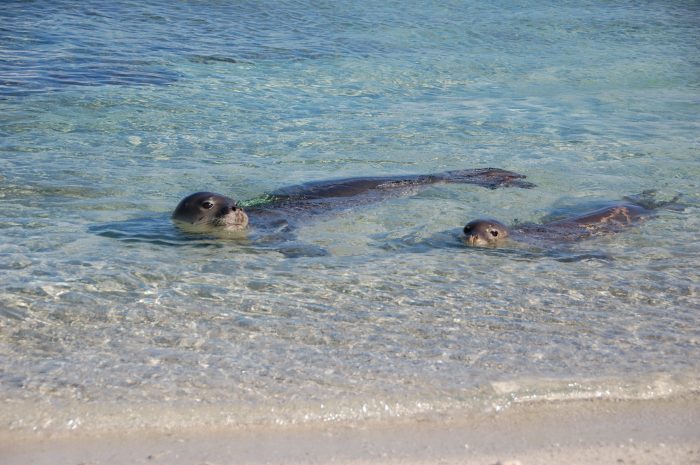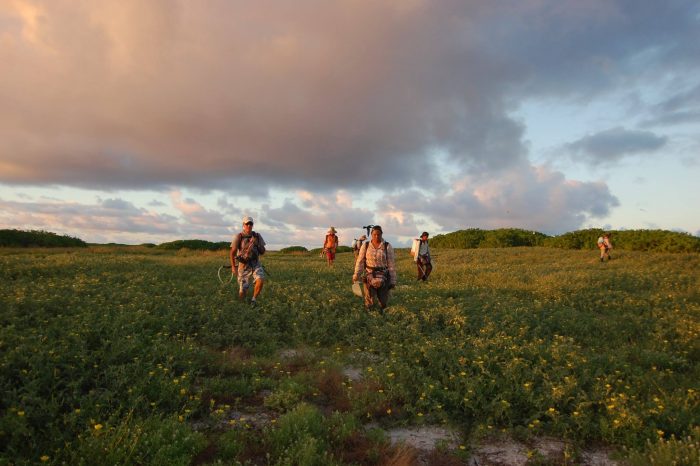By Dawn Barlow, MSc Student, Geospatial Ecology of Marine Megafauna Lab, Department of Fisheries and Wildlife, Oregon State University
Today we are flying to the other side of the world and boarding a 63-foot boat to study the largest animals ever to have inhabited this planet: blue whales (Balaenoptera musculus). Why do we study them, and how will we do it? Before I tell you, first let me say that no fieldwork is ever straightforward, and consequently no fieldwork lacks exciting learning opportunities. I have learned a lot about the logistics of an international field season in the past month, which I will share with you here!


Unmanned aerial systems (UAS, a.k.a. “drones”) are becoming more prevalent in our field as a powerful and minimally invasive tool for studying marine mammals. Last year, our team was able to capture what we believe is the first aerial footage of nursing behavior in baleen whales, in addition to feeding and traveling behaviors. And beyond behavior, these aerial images contain morphological and physiological information about the whales such as how big they are, whether they are pregnant or lactating, and if they are in good health. I’ll start making a packing list for you to follow along with. So far it contains two drones and all of their battery supplies and chargers.

Perhaps you read my first GEMM Lab blog post, about identifying individual blue whales from photographs? Using these individual IDs, I plan to generate an abundance estimate for this blue whale population, as well as look at residency and movement patterns of individuals. Needless to say, we will be collecting photo-ID images this year as well! Add two large pelican cases with cameras and long lenses to the packing list.

Now wouldn’t it be great to capture video of animal behavior in some way other than with the UAS? Maybe even from underwater? Add two GoPros and all of their associated paraphernalia to the mounting gear pile.
Now, bear with me. There is a wealth of physiological information contained in blue whale fecal matter. And when hormone analysis from fecal samples is paired with photogrammetry from UAS images, we can develop a valuable picture of individual and population-level health, stress, nutrition, and reproductive status. So, say we are able to scoop up lots of blue whale fecal samples – wouldn’t that be fantastic? Yes! Alright, add two nets, a multitude of jars, squirt bottles, and gloves to the gear list. And then we still need to bring them back to our lab here in Newport. How does that happen? Well, we need to filter out the sea water, transfer the samples to smaller tubes, and freeze them… in the field, on a moving vessel. Include beakers, funnels, spatulas, and centrifuge tubes on the list. Yes, we will be flying back with a Styrofoam cooler full of blue whale “poopsicles”. Of course, we need a cooler!
Alright, and now remember the biopsy sampling that took place last season? Collecting tissue samples allows us to assess the genetic structure of this population, their stable isotopic trophic feeding level, and hormone levels. Well, we are prepared to collect tissue samples once again! Remember to bring small tubes and scalpel blades for storing the samples, and to get ethanol when we arrive in Wellington.
An important piece in investigating the habitat of a marine predator is learning about the prey they are consuming. In the case of our blue whales, this prey is krill (Nyctiphanes australis). We study the prey layer with an echo sounder, which sends out high frequency pings that bounce off anything they come in contact with. From the strength of the signal that bounces back it is possible to tell what the composition of the prey layer is, and how dense. The Marine Mammal Institute here at OSU has an echo sounder, and with the help of colleagues and collaborators, positive attitudes, and perseverance, we successfully got the transducer to communicate with the receiver, and the receiver to communicate with the software, and the software to communicate with the GPS. Add one large pelican case for the receiver. Can we fit the transducer in there as well? Hmmm, this is going to be heavy…

Now the daunting, ever-growing to-do lists have been checked off and re-written and changed and checked off again. The mountain of research gear has been evaluated and packed and unpacked and moved and re-evaluated and packed again. The countdown to our departure date has ended, and this evening Leigh, Todd, and I fly out of Portland and make our way to Wellington, New Zealand. To think that from here all will be smooth and flawless is naïve, but not being able to contain my excitement seems reasonable. Maybe it’s the lack of sleep, but more likely it’s the dreams coming true for a marine ecologist who loves nothing more than to be at sea with the wind in her face, looking for whales and creatively tackling fieldwork challenges.
In the midst of the flurry of preparations, it can be easy to lose sight of why we are doing this—why we are worrying ourselves over poopsicle transport and customs forms and endless pelican cases of valuable equipment for the purpose of spending several weeks on a vessel we haven’t yet set foot on when we can’t even guarantee that we’ll find whales at all. This area where we will work (Figure 1) is New Zealand’s most industrially active region, where endangered whales share the space with oil rigs, shipping vessels, and seismic survey vessels that have been active since October in search of more oil and gas reserves. It is a place where we have the opportunity to study how these majestic giants fit into this ecosystem, to learn what about this habitat is driving the presence of the whales and how they’re using the space relative to industry. It is an opportunity for me as a scientist to pursue questions in ecology—the field of study that I love. It is also an opportunity for me as a conservation advocate to find my voice on issues of industry presence, resource extraction, and conflicts over ocean spaces that extend far beyond one endangered species and one region of the world.
Fieldwork preparations have made clear to me once again the strength and importance of collaboration in science. Kim Bernard from OSU’s College of Earth, Ocean, and Atmospheric Sciences and Craig Hayslip from the Marine Mammal Institute’s Whale Telemetry Group spent half a day troubleshooting the echosounder with us. Western Work Boats has manufactured a pole mount for the echosounder transducer, and Kristin Hodge is joining us from Cornell University’s Bioacoustics Research Program to assist with data collection. Callum Lilley and Mike Ogle from the New Zealand Department of Conservation will join us in Wellington to collect the biopsy samples, and Rochelle Constantine and Scott Baker will facilitate the archiving and transport of the tissue samples back to Newport for analysis. Scientific colleagues at NIWA will collaborate on oceanographic aspects and conduct stable isotope analysis of tissue samples. We are also grateful to the indispensable logistical support from Kathy Minta and Minda Stiles in the OSU Marine Mammal Institute. And, of course we could not do any of this work without the generous funding support from The Aotearoa Foundation, The New Zealand Department of Conservation, Greenpeace Aotearoa New Zealand, OceanCare, The International Fund for Animal Welfare Oceanea Office, Kiwis Against Seabed Mining, the OSU Marine Mammal Institute, and the Thorpe Foundation. Our science is stronger when we pool our energy and expertise, and I am thrilled to be working with this great group of people.
Stay tuned, the next several blogs will be posted from the field by the New Zealand blue whale team!


























































